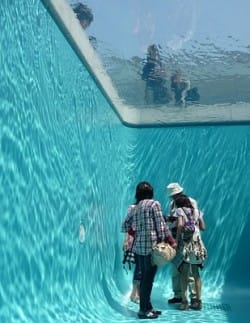Why You Should Always Caption Your Photos & Videos Properly
Online we encounter more information than ever, but we also lose a hell of a lot. On May 3, the blog WeLoveViral posted a photos and a video titled “Swimming Pool Illusion [http://weloveviral.blogspot.com/2010/05/swimming-pool-illusion-fake-swimming.html].” The YouTube video embedded in the post is

Online we encounter more information than ever, but we also lose a hell of a lot.
On May 3, the blog WeLoveViral posted a photos and a video titled “Swimming Pool Illusion.” The YouTube video embedded in the post is titled “Amazing Japanese Fake Pool” and has been viewed (as of today) 6,211,210 times!
The problem is that the pool is question is neither a pool, nor Japanese. In fact, it is an artwork by Argentinean artist Leandro Erlich titled “Swimming Pool” (2008), which New Yorkers will remember for its very long run at PS1.
Fortunately for the blog, they corrected their original error, but when I surfed YouTube to look for videos of Leandro Erlich’s trippy work, which were correctly labeled, I only found one by Vernissage TV with only 7,590 views.
Part of the problem is that, if memory serves me right, visitors will not allowed to photograph or video Erlich’s work. What is more interesting to me is that with the right tagline and packaging Erlich’s pool was able to muster over six million views since July 2007! Which is no small feat.
Part of me wonders if the person who shot the video purposefully didn’t label the work properly so they wouldn’t be subject to a take down notice.
Can someone please fix our shitty copyright laws now?





